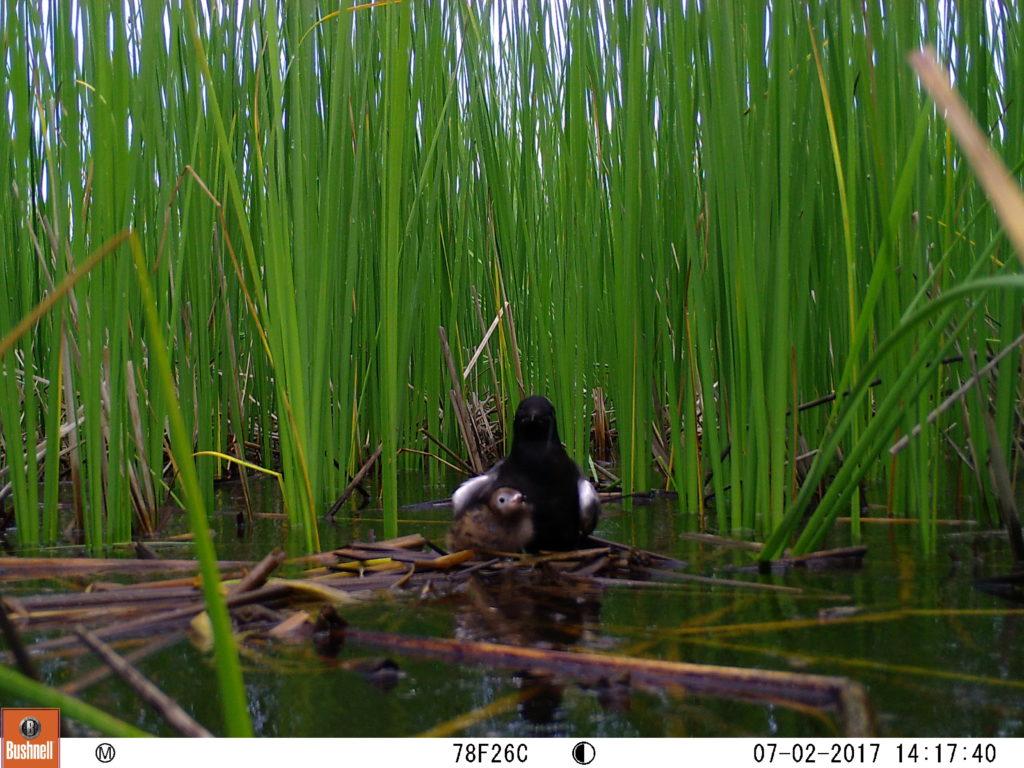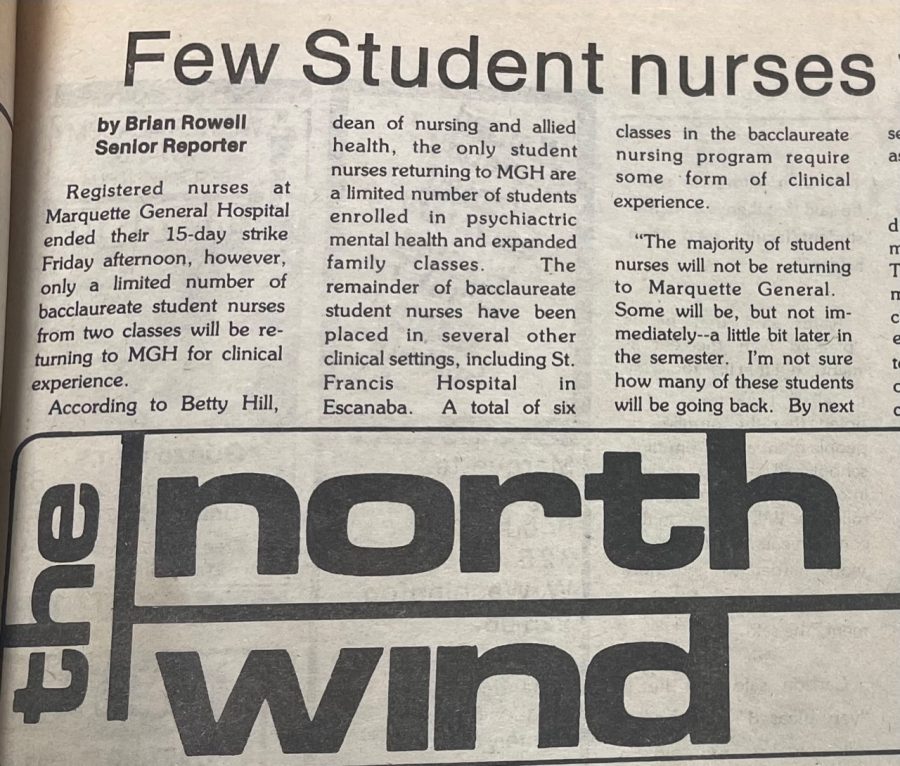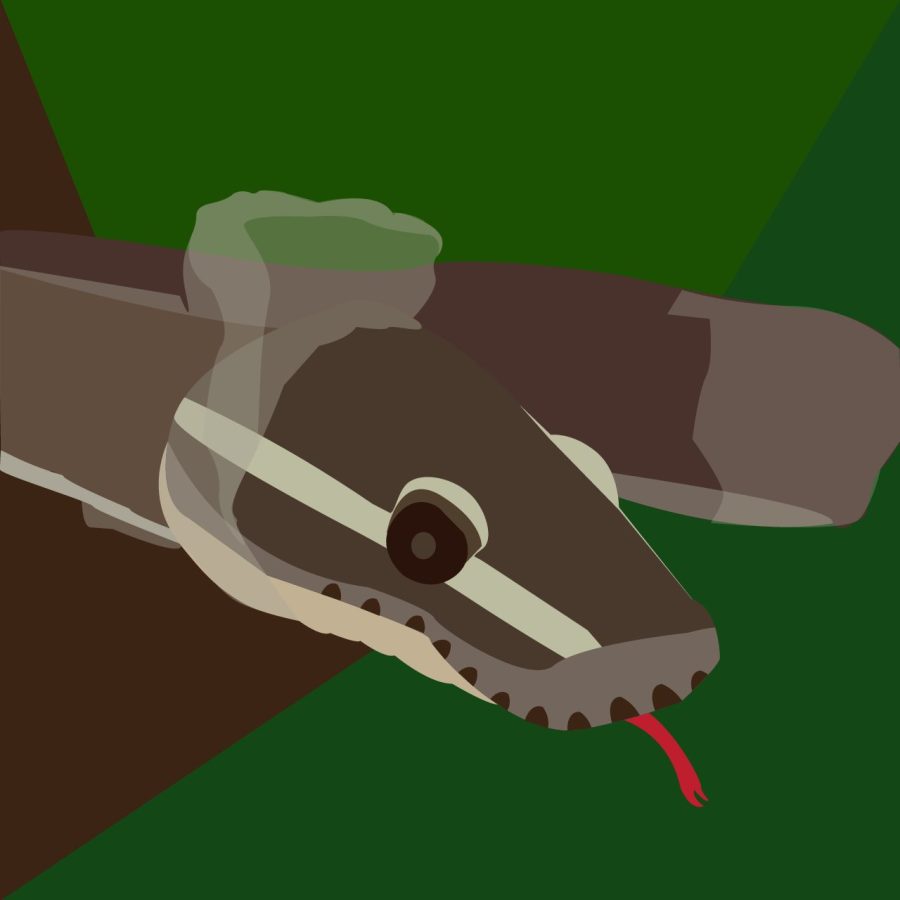The marsh is dim, sunlight just peeking out from the horizon. Her kayak glides quietly over the murky water. She paddles, eyes keen to spot the black tern—a bird a little smaller than a robin—as well as the species’ nests, and the invasive plants that might threaten them.
The major focus of study for Dawn Marsh, an NMU biology graduate student, is the black tern, a wetland bird species that relies upon floating nests of matted vegetation for reproduction. Since the 1980s, 89 previously documented tern colony sites have been abandoned in Michigan, and their population declines by 2.5 percent annually, Marsh said. With a decreasing population trajectory, Marsh travels through wetlands and sets up trail cameras to look at the nesting of these birds and if their nesting success is affected by invasive plant species.
“Getting out in the field really takes you to places that you normally wouldn’t have seen otherwise, and you get up close and personal with some amazing species that are very secretive,” Marsh said. “If you talk to anyone who’s into bird watching and you tell them what you’ve seen out here, they start drooling and getting excited.”
Since most of the work is done by kayak and walking, Marsh does not have undergraduate students working alongside her, and it also helps to not disturb the nesting colonies, Marsh said. But, an extra pair of helping hands comes from her husband, Matthew Leon, who helps her frequently.

“He is my go-to field assistant,” she said with a smile. “He helps pull me out of the water when my waders get stuck.”
Terns are a species that not many are familiar with, and they’re often overlooked, Marsh said, and they are a priority species because they are an indicator for the health of wetlands.
“It’s important to become familiar with some of the threats that we’re facing with the spread of invasive plant species, and it’s good to learn about a species that’s currently on the decline,” Marsh said.
Marsh started her research project because she works for the U.S. Fish and Wildlife Service in the Coastal Program, and they recently funded a project on black terns.
“I thought that might be a good way for me to marry the two things: marrying my current position with my interest in black terns, and getting my masters along the way,” Marsh said.
Other than science, Marsh’s big passion is photography, and she sees it reflected in her current research project.
“I have to go through 300,000 photos, so I better enjoy looking at photos, first and foremost,” she said with a laugh. “And, it’s just great to be outside and look at birds outside. While I wouldn’t call myself a ‘birder’ per se, I do really enjoy the opportunity to get out and observe species in their natural habitats.”
Pat Brown, a professor emeritus of biology at NMU, supervises Marsh with her studies of these birds. Although Brown is a mentor for Marsh, she also influences him in his own studies, he said.
“She’s constantly digging into literature, so you have to try and stay up with her. That’s always good because it pushes me to stay current in the research that I like to do,” Brown said.
Marsh has faced a lot of challenges and difficult circumstances, such as a wavy storm that wiped out the nests of the birds she observed, but she perseveres through the adversity, he said.
“It’s inspiring to watch young people work really hard to master a difficult problem, and [Marsh] has done that,” Brown said.
She is a prime example of a student who has made use of the opportunities that are in front of her to improve herself, Brown said.
“She has consistently sought opportunities to make her study better, to make her background better, to learn things to make her a better biologist. It’s that kind of sustaining attention that makes people really good at what they do, and that’s what she’s done,” he said.
In August, Marsh will present her research at the Waterbird Society conference in Vancouver, British Columbia. Her seminar at NMU on the topic, which is open to the public, is projected to happen in October.
“[Marsh] is the archetype of a really dedicated biologist. She is fearless, and she is tough,” Brown said.




























